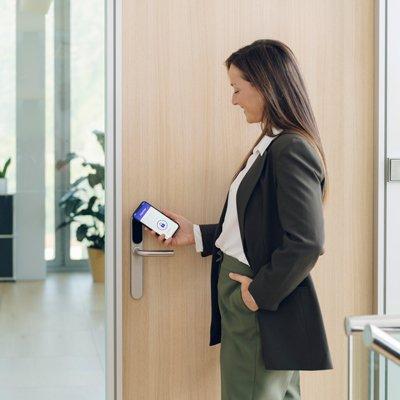 |
| EVVA will be represented at the IFSEC for the second time |
The IFSEC International is the largest event for the security industry. Exhibitors and the event in general cover products from access control and biometrics to CCTV, intelligent buildings and counter terror. From 16th–18th of June the IFSEC attracts more than 24.000 visitors and 650 exhibitors from over 100 countries.
EVVA’s latest innovations
As one of Europe’s leading manufacturers of access solutions, both mechanical and electronic, EVVA will be represented at the IFSEC for the second time. The high market potential of new electronic locking systems is the main reason for participation at the IFSEC. Especially the latest innovations are presented at the EVVA booth (D1850). These products were entirely developed by EVVA’s in house research- and development department.
- The virtual network: Xesar Release 2.0 - Xesar will be taking to the air in 2015. What is making Xesar take off? Particularly the virtual network as part of release 2.0, making Xesar more transparent, convenient and even more secure. The Xesar virtual network uses the issued identification media to exchange information between software and doors to always keep the system up to date.
- Coming soon: AirKey wall reader - AirKey is the innovation from EVVA. Developed and manufactured in Austria, the cell phone-based electronic locking system offers flexible solutions for daily around-the-clock business, in particular for enterprises with distributed locations. The AirKey wall reader ideally enhances AirKey application options. Soon also available for sliding doors and swing doors, locking components, separation and lifts.
- ICS with TAF: Temporary Access Function - A mechanical solution that not only takes care of the “who and what” but also the “when”. That’s unique. How does it work? As an authorised person you can additionally authorise a service key by removing the primary key in the "service position" (position "S"). It is up to you for how long.
The high market potential of new electronic locking systems is the main reason for participation at the IFSEC
- Anti-Snap option - EVVA’s anti-snap option will make any front door impenetrable. Even professionals are unable to open this hardened steel solution. Its function is simple, yet highly effective: the cylinder simply snaps at a rated break point in the event of a snapping attempt. In this process, it blocks the remaining cylinder and renders it unusable.
- Design keys - With the new, ergonomic design keys in black, red and blue it not only becomes easier to distinguish keys, colour coding also makes locking systems easier to manage.
- Your personal appearance: Individual profile ICSxp – With your EVVA individual profile, you are more flexible thanks to shorter lead times. Do your customers urgently need keyed alike cylinders or small master key systems? Now you can react quickly and meet these demands yourself.
EVVA at the IFSEC 2015
Where: Booth D1850
When: 16.-18. June 2015, London ExCeL


















